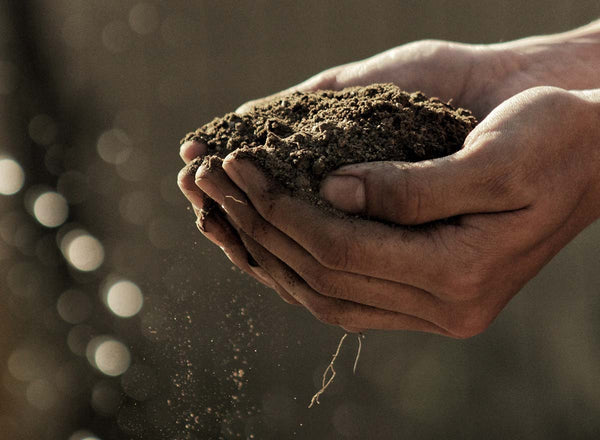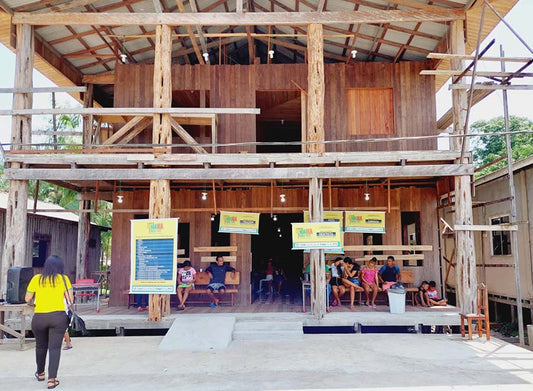Tired of seeing your food waste pile up in the trash can week over week? Looking to give back to the planet in a way that will make you feel less wasteful? Composting is a great solution to extra compost scraps that you feel guilty throwing away. It's also perfect for starting a home garden, or replacing any fertilizer you were planning on buying to spruce up your yard.
Benefits of Composting
Much of the "waste" that we throw out each day is actually just nutrients in disguise. Food scraps, vegetation, and other types of organic matter can be decomposed into compost with the help of beneficial bacteria and fungi. As food scraps and yard waste make up more than 30 percent of what we throw away, it's important to keep these materials out of landfills where they would release methane, a potent greenhouse gas.
By composting, you can enrich garden soil, help retain moisture and suppress plant diseases and pests. You'll have less of a need for chemical fertilizers, as you'll be producing a rich nutrient-filled material called humus. By composting the waste you'd normally throw away, you are reducing methane emissions from landfills and lowering your carbon footprint.

How Composting Works
Composting is combining organic waste, like leftover food scraps and yard trimmings, into the right ratios in piles, rows or vessels. The majority of composting techniques requires layering brown and green materials, with a three parts brown and one part green ratio. Brown material is carbon-rich, things like straw, egg cartons, newspaper, wood chips and woody plant trimmings, dead leaves, bark, pine needs, sawdust. Green material is nitrogen-rich: vegetable scraps, leaves, grass clippings and garden waste, food scraps, and coffee grounds. Organic waste will then decompose through composting due to oxygen-breathing aerobic microbes like soil fauna, enzymes and fungi. Keeping the compost pile fresh by turning it every so often helps with aeration and speeds up the decomposition.
6 Ways to Compost
A Compost Pile
Compost piles are for people with a lot of space in their yard and want a low-maintenance option. Creating a compost pile at home is as simple as throwing your organic material and kitchen scraps into a pile in your yard and let it decompose, no turning necessary. This process can take from six months up to a year to turn the waste into compost. Your compost is ready when it's dark brown and has an earthy odor. To make your compost heap less of a backyard eyesore, fence it off with chicken wire or concrete blocks. Once a year, you can dig out the finished compost material from the bottom.

Holding Bins
This home composting option is for people who still want something they don't have to manage too often, or anyone composting through the wintertime in cold weather. Ready-made plastic compost bins are available to purchase, or you can choose to make one out of wood. You can turn your compost to speed up the process, but it will also take care of itself and decompose on its own inside. Usually these bins have a small door to access the finished compost.
Tumbling Barrel Composters
This is a good choice for people who want to quickly compost small batches of waste. If you're able to manage the composting process on a consistent basis, you'll want to hand crank these barrel-shaped containers a few times a day. A compost tumbler is usually smaller sized, so making sure you have the right balance of brown and green waste is important. You'll also have to wait for one batch of compost to finish before adding more organic waste, but luckily, these containers work pretty quickly.
Multi-tiered Composters
Another option is a multi-tiered composter, which is a series of stacked boxes with removable panels. This allows the compost ingredients to move through each tier towards the bottom unit as they go through the decomposition cycle. When finished, the fresh compost will come out of a door at the bottom. You'd choose this option if you're looking for something relatively low-maintenance, but faster than a pile or bin.

Worm Composters
This solution is great for those that live in apartments or small households without yard waste. This might be a bit icky to some, but a great solution for those with lack of yard space is a five to ten gallon bucket and a packet of red worms to handle your waste. Called vermicomposting, this method is extremely fast - each pound of worms will process a half pound of food scraps daily. We recommend keeping the bin under your kitchen sink. These red worms are so efficient that you don't need to aerate your compost, and the bin won't smell or attract pests.
The Green Cone
Another option that many are finding efficient is the Green Cone system. It's great for those that don't need fertilizer and would instead dump their kitchen waste and be done with it. It can handle up to two pounds of kitchen waste including meat, fish and dairy products. The Green Cone system is a green cone that sits on top of a buried basket in your yard. You combine your food waste with an accelerator powder and then put them in the hole in the top of the cone. The cone's patented design circulates air to keep your compost aerated, and solar heat speeds up the composting process. The majority of the waste becomes water and the CO2 that all decomposition produces.
The last option that is possible in many cities is to hire a composting service. You can pay a monthly fee to have your household compost picked up, making your life that much easier while still doing your part for the planet. You can search "Compost pickup service (your city)" to see what options in your area are available. More and more cities are offering curbside pickup for food waste along with yard waste. If your city doesn't yet offer this service, call them and urge them to consider. Another way to support compost infrastructure is to support EPR bills in your state.

Exciting News from SAMBAZON: Upcycle our Ready-to-Eat Bowls!
We've recently launched our Ready-to-Eat Açaí Bowls. Not only are these delicious and an easy solution for an on-the-go lifestyle; the container is made with 100% plant-fiber packaging which is recyclable, and they are PFAS free. The materials are also individually certified industrial compostable but we need the final structure to be certified through BPI and we first have to finalize a few pieces of the packaging design. Our team will be starting that process later this year!
In the meantime, SAMBAZON has been working with local composters directly to see how our bowls will break down in their facilities in real life. There is currently no Home Compost certification in the USA. Our bowls do not contain harmful plastics or toxins, if you do decide to try them in your compost bin. You can learn more about compost certification for packaging here.
Many of you may be familiar with recycling, and you've gained more knowledge on composting, but you heard about upcycling? Upcycling is the act of taking something no longer in use and giving it a second life and new function. Lucky for you, our Ready to Eat Açaí Bowls make for great seed starters! Watch the video here.
Comment below if you've been inspired to start composting, and tell us what method you're planning on using! Or if you're already composting, share your best tips below.







Comments
(0 Comments)Please note, comments need to be approved before they are published.